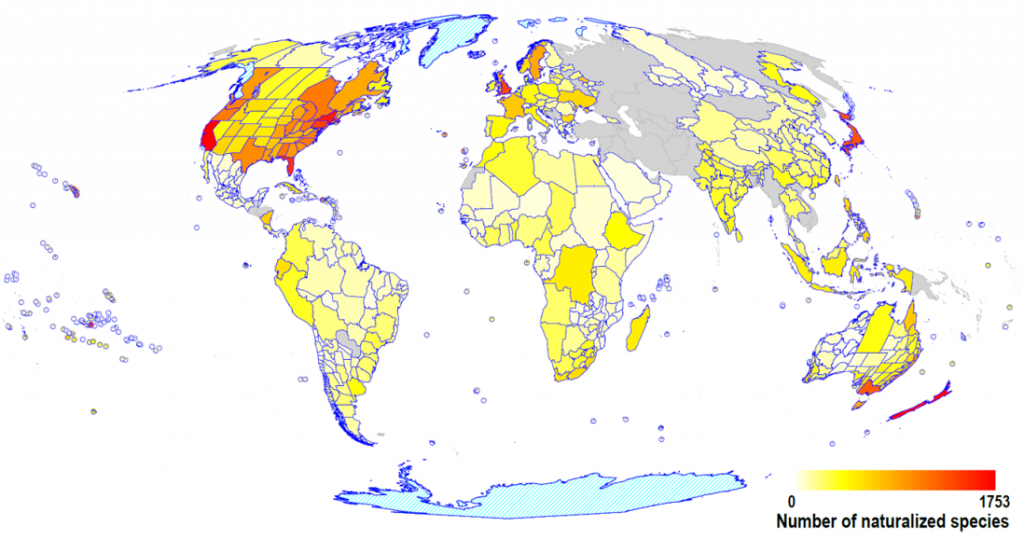GloNAF (Global Naturalized Alien Flora) is a living database project about alien plant species and became a synonym for many related projects dealing with all kinds of scientific and policy relevant questions and studies about alien species (also other taxa) and related data.
The Global Alien Naturalized Flora (GloNAF) database provides spatial information on naturalized alien vascular plant species distributions worldwide. This database contains 13,939 alien plant species naturalized and covers 1,029 regions (countries, federal states, islands) which cover over 83% of the terrestrial area of the world. The database has recently been published (van Kleunen et al. 2019) and provides a wide range of opportunities to analyze macro-ecological and macro-evolutionary patterns of plant invasions. This project aims 1) to continue updating and expanding GloNAF, (2) to assess and explain geographic and taxonomic patterns in numbers of naturalized species, (3) to test whether different attributes and economic uses of species are related to invasion success, along different dimensions of invasion success and across time, and (4) to predict future invasions based on different scenarios of global investments, bilateral trade and global environmental change.


